Apple, other ultrathin notebooks get green grade
by: Ecofriend, 2012-10-26 03:26:51 UTC
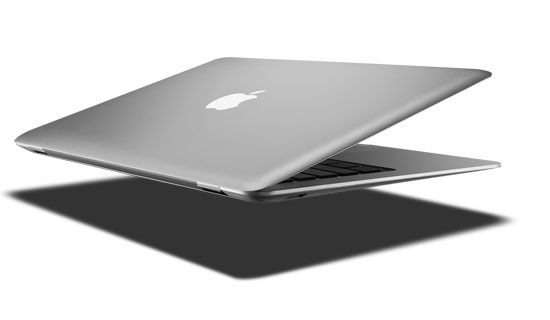
Apple no longer associated with EPEAT
Apple gadgets are not environmental friendly any more- this statement made a lot of sense some time back as Apple decided to end its involvement in EPEAT’s program. This backing out of Apple resulted in placing most of products in a cloud of doubt that whether or not they adhere to the green standards. However, this was a thing of the past as according to latest news the Apple ultrathin notebooks have been declared ‘green’ by EPEAT. What is EPEAT you might ask, EPEAT which stands for Electronic Product Environmental Assessment Tool works for minimizing the harmful consequences that the electronic gadgets might impose on the environment.
EPEAT functions by evaluating the gadgets manufactured by different brands on eight different parameters and some of them are: lifetime of the electronic product, whether or not the gadget is recyclable and the level of toxic materials in the gadgets. The initiative by EPEAT is definitely a good one and when Apple announced that it is no longer attached to the program then it came as shock to the world as Apple has always lauded its gadgets as environmental friendly. But this is all in the past now and according to the latest evaluation report by EPEAT the ultrathin computers manufactured by Apple and some other renowned brands are totally eco friendly.
Apple is back together with EPEAT
The news of Apple products not being environmental friendly sure saddened many of the Apple followers as today almost everyone is making efforts to go green and contribute in the initiative to conserve environment. This decision of Apple brought many negative responses from the public and that is what made Apple realize and it made public announcement to be back with EPEAT.
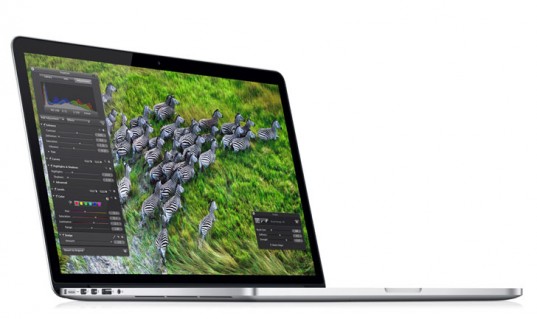
The main reason for Apple’s back out was regarded to be the launch of its new product which might not able to qualify on the parameters set by EPEAT. However, now Apple works in full coordination with EPEAT and sends them its eligible gadgets for assessment. Now, when the Apple gadgets are EPEAT certified again, the people who were in a dilemma to buy them or not have regained their confidence in them.
The electronic gadgets which can be conveniently dismantled for purposes such as upgrades or repair are regarded to be more environmental friendly than the ones which are almost impossible to take apart. The easily dismantled electronic gadgets are convenient to recycle when they are no longer useful and of course they are easy to repair when required. The MacBook Pro by Apple when evaluated on this parameter only got a score of 1 on a scale of 10 which is undoubtedly the worst score a gadget aiming to be environment friendly.
The ultrathin notebooks certified by EPEAT are great news for all the people who like to have sleek, advanced and eco friendly gadgets. However there are some people who are not happy with this evaluation of EPEAT and have stated that they are highly disappointed with the results. Casey Harrell who happens to be working with Greenpeace said that he is totally let down by the evaluations done by EPEAT as it so happens that only a few people will be successful in upgrading these ultrathin notebooks.
Harrell also said that EPEAT can never be as ambitious as Greenpeace is as EPEAT is more on the side of the sellers of these electronic gadgets. The response to the EPEAT assessments have been mixed as some people are relieved to hear that most of the ultrathin notebooks including the Apple ones are safe for the environment while some others defy the fact by saying that they are not completely eco friendly.
China gets $600m for Eco Projects
by: Ecofriend, 2012-10-26 03:35:31 UTC

Second tier cities of China are growing at a rapid pace. A package of four green projects has been designed in order to clean and develop these cities. This certainly is a big drive and also requires lots of funds. The good news is that the Asian Development Bank of China is pumping in $600 million for the successful implementation and completion of this project.
What are these projects all about?
The projects have been designed in a manner such that the waste can be recycled and transformed into clean energy, thereby reducing CO2 emissions. It also caters to expanding Eco-friendly transport and protection of fragile wetland areas. Robert Wihtol, director general of ADB’s East Asia department said, “These four projects support PRC’s transition to a lower-carbon growth path built on a long-term commitment to green urbanization, better energy efficiency, and environmental preservation, we still have a long way to go, but with forward-looking planning and investment, the Chinese cities of the future can have clean air, blue skies, clean water and more green areas.”
The grant of US$ 600 million, has been very carefully divided between the consortium of these 4 projects. Out of the total amount US$ 200 million is dedicated towards the development of biomass plants. These plants convert agricultural and municipal waste into clean energy. This plant will benefit people in many ways:
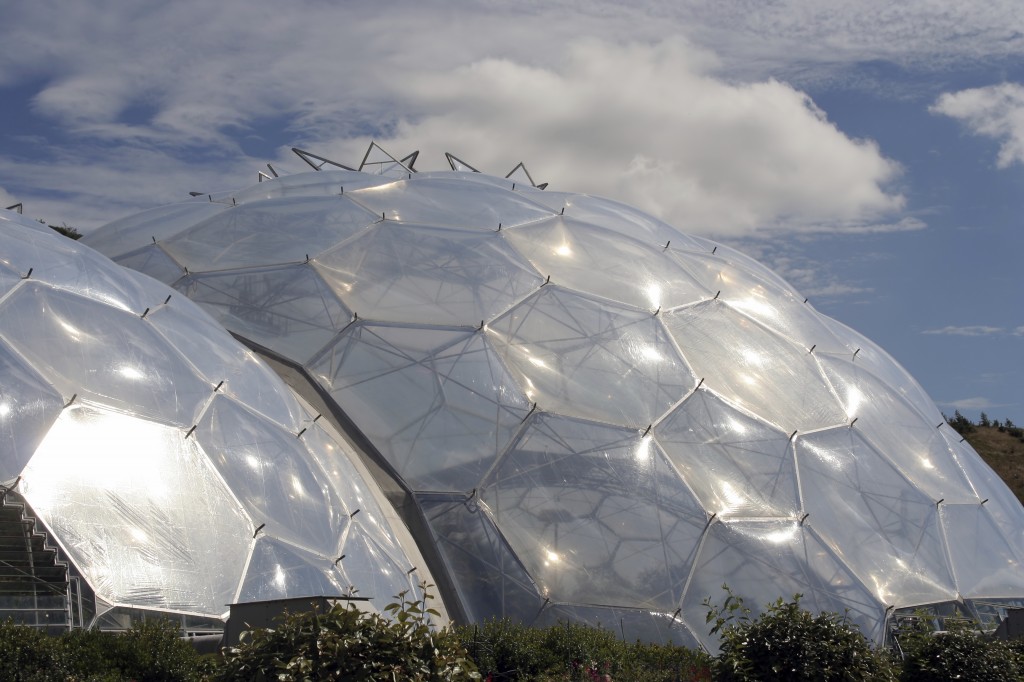
- The entire process will ensure supply of reliable green energy to millions of people residing in Anhui, Jiangsu, Shandong and the southern province.
- The process will ensure a healthier and cleaner living environment.
- Greenhouse gas emissions will drop to as low as 638,000 tonnes per year.
Another, US$ 150 million is dedicated towards the expansion of district heating systems. These heating systems are mainly required in the northeastern Heilongjiang province, temperature in this area during winters falls down to as low as -40 degrees. As of now, a majority of the houses in this region are dependent on coal stoves for indoor heating. This age old methodology pollutes the environment way too much, leading to many health problems and respiratory diseases. Expansion of the heating system will ensure that these houses are benefited and a major polluting factor will get eliminated ensuring many healthy lives.
The remaining US$ 250 million, has been divided between Western Gansu Province two poorest cities and urbanization of emerging towns in Liaoning as US$ 100 million and US$ 150 million respectively. The funds will be utilized to create better infrastructure in both the regions.
Building Bytes 3D printed bricks by Brian Peters
by: Dezeen, 2012-10-31 14:04:23 UTC

Dutch Design Week: architect Brian Peters has adapted a desktop 3D printer to produce ceramic bricks for building architectural structures (+ movie). (more…)


 ronan and erwan bouroullec: furniture for hay at orgatec
ronan and erwan bouroullec: furniture for hay at orgatec
by: Designboom - Weblog, 2012-10-30 11:30:00 UTC

the set of tables and chairs will be used for the newly re-modelled faculty of humanities at københavns universitet in copenhagen, denmark.
read more
Synthetic Fuel Made From Air and Water
by: Eco Geek Latest, 2012-10-24 16:16:15 UTC

An English company called Air Fuel Synthesis has begun producing gasoline (petrol) directly from air and water. Using carbon capture technology to sequester CO2 out of the atmosphere, and electrolysis to crack water into its constuituent hydrogen and oxygen, the company's process then combines the hydrogen and carbon dioxide to create synthetic gasoline or other fuels.
To be carbon emissions neutral, any carbon that is going to be burned as fuel ought to have come from the atmosphere, rather than from fossil sources buried in the ground. That is why plant-based and microbial methods of producing fuel are considered relatively clean, since the carbon in them was atmospheric. This process short circuits that even further by directly extracting the CO2 from the air and synthetically creating the gasoline replacement.
In addition to the direct atmospheric carbon extraction, the process also uses renewable energy to power the electrolysis process, so that the carbon debt is not merely transferred. Although the feedstock is free, the other costs of the process are likely too high for this to be an immediate replacement for oil drilling and refining, at least in the short term. And the process has only been able to produce a small amount of fuel in its test facility, yielding just five liters (less than 1.5 gallons) in two months. But cost and capacity are issues that can be improved as the method is developed and scaled up.
This adds to the number of non-petroleum processes being developed for fuel production we have seen. It seems less a question of whether these methods will work than it is one of which ones will reach commercial scale, and how soon that happens.
via: Treehugger
 firewood log side tables by vyrobeno lesem
firewood log side tables by vyrobeno lesem
by: Designboom - Weblog, 2012-10-27 12:03:00 UTC

the limited collection of side tables are made from a selection of found birch, hornbeam and ash firewood.
read more
Ferry Runs on 100% Renewables
by: Environmental Leader, 2012-10-29 14:04:59 UTC

An emission-free passenger ferry that holds 1,500 people and about 1.3 miles of parking spaces will be operating between Denmark, Germany and Sweden within the next five years. The ferry was designed by FutureShip, a subsidiary of GL Group, for shipping company Scandlines. It will run on a combination of solar PV power, fuel cells, [...]
 Sustainability is Key, 42% of Companies Say
Sustainability is Key, 42% of Companies Say
by: Environmental Leader, 2012-10-29 14:49:30 UTC

Some 42 percent of companies in 2012 – more than twice as many as in 2006 – say sustainability plays a key role in their business operations, according to a study by Siemens and McGraw-Hill Construction. In 2006, 18 percent of companies did so. The 2012 Greening of Corporate America study is the third in [...]
 Flotspotting: Biomimetic Personal Equipment by Jean-Marc Sheitoyan
Flotspotting: Biomimetic Personal Equipment by Jean-Marc Sheitoyan
by: Core77, 2012-10-29 17:00:00 UTC

Industrial designer Jean-Marc Sheitoyan is currently a Project Manager at Quebec's Mawashi Protective Clothing, Inc., where he's designed several 'personal equipment' products since he started working there over five years ago. In keeping with the company's commitment to developing "new solutions and made significant enhancements to existing products for law enforcement, corrections, military and industrial personnel," Sheitoyan's portfolio includes protective gear as well as apparel for industrial applications.

The Tactical Knee and Elbow Protection is perhaps the most explicitly biomimetic of Sheitoyan's designs: in order to improve the flexibility and range of motion of knee and elbow pads for tactical situations, he started by 3D scanning a lobster tail and refining the model for manufacturing.


Similarly, the Blunt Trauma Protective Suit, for which Sheitoyan was responsible for product management and marketing, took "inspiration from an Armadillidium Vulgare to develop articulated rigid armor plates to enhance the mobility and flexibility of protective suits."


The Industrial Load Transfer Belt, on the other hand (or torso, as it were), is an adjustable, one-size-fits-all belt that is designed to "transfer the load of a wireless crane controller onto the body's musculoskeletal center axis." Specifically, Mawashi created the belt for an industrial aluminum client—"molten metal transfer crucibles" were the cargo in the original brief. "The system features two telescopic arms with adjustable angle, and a quick-release mechanism."
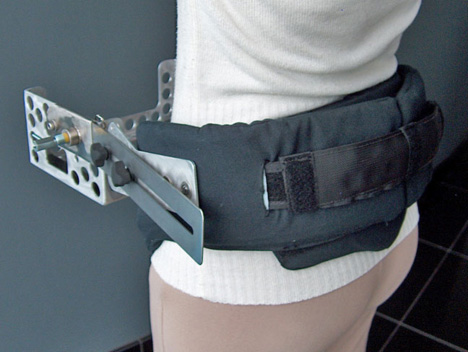
(more...)


 Pollinators Paradise by Benjamin Spöth
Pollinators Paradise by Benjamin Spöth
by: mocoloco, 2012-10-30 00:35:31 UTC

"As you might already know; one third of our food (such as fruits, vegetables, seeds and nuts) depends on pollination by insects." Benjamin Spöth wants to help.






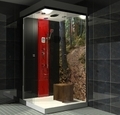




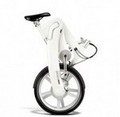
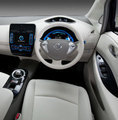
Comments by our Users
Be the first to write a comment for this item.